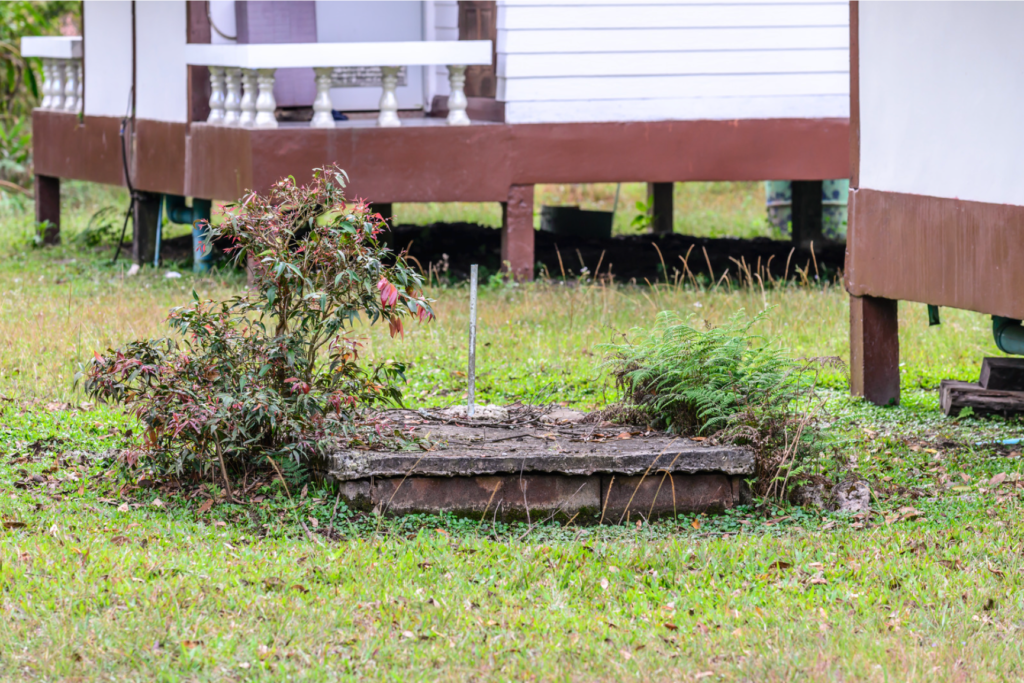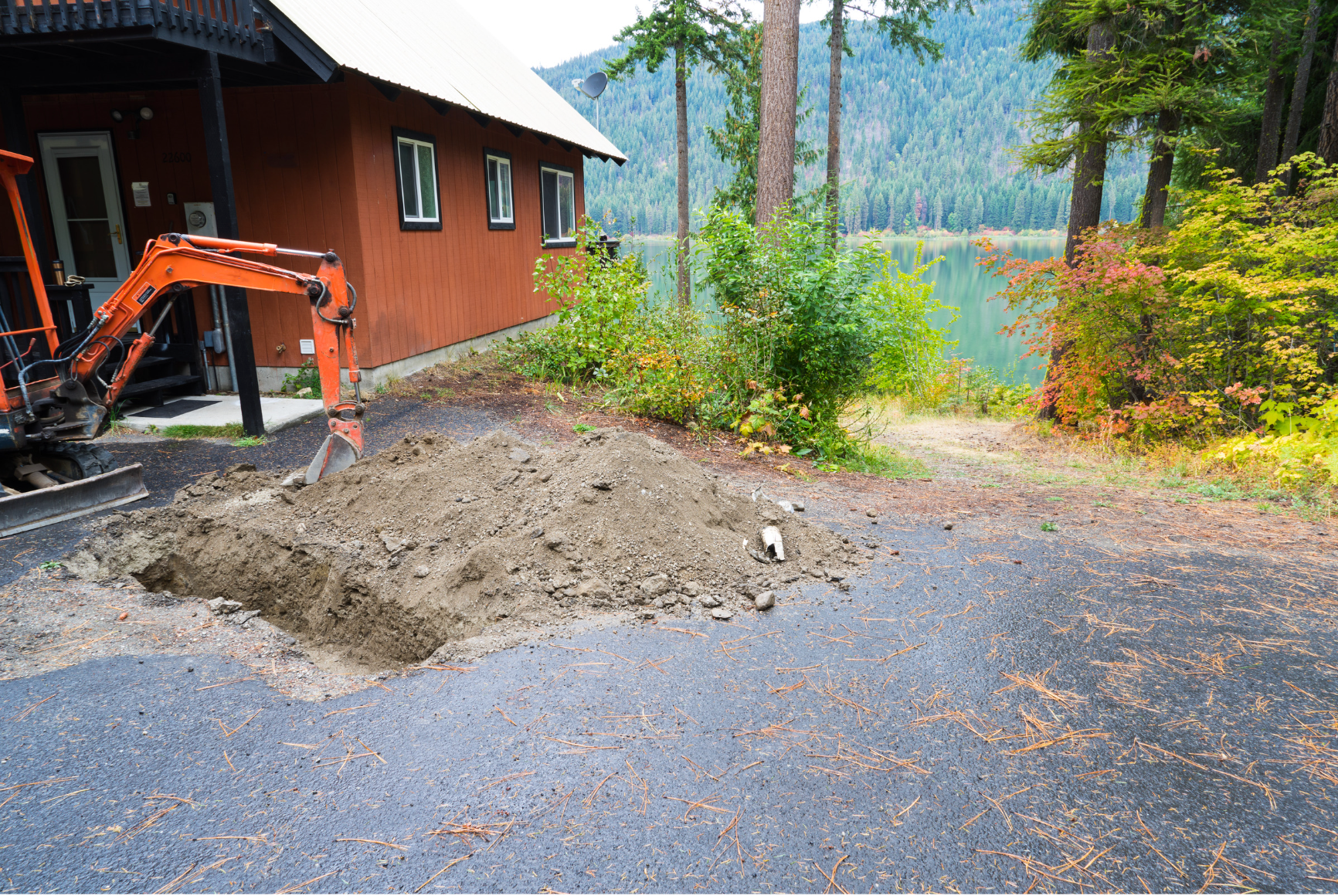Here’s a myth buster – septic tanks don’t always have to be hidden away in the backyard or as far from your house as you can get them. Sure, people worry about smells, getting to them for maintenance, and the thought of wastewater seeping towards the house.
But where you place your septic tank isn’t a one-size-fits-all thing. So, let’s dig into the big question: Can a septic tank be in front of the house? It’s not as simple as ‘yes’ or ‘no’.
We’re going to dive into what a septic tank is, what factors affect where it goes, and the good, the bad, and the ugly of having it in front of your house.
So, let’s roll up our sleeves and unravel the mysteries of septic tank placement!
Factors Influencing Septic Tank Placement
Choosing where to place your septic tank isn’t a decision to be made on the fly. A bunch of important factors come into play. Let’s dive in.
The Law of the Land
Local and State Laws
First up, you’ve got to know your local and state laws. Many places have strict rules about where septic tanks and drain fields can go to keep everyone healthy and safe.
These laws often set minimum distances from your house, property lines, wells, and bodies of water.
Permits and Regulations
Before you start digging, you’ll usually need a permit from your local health or environmental department. Getting this often involves a site evaluation and soil testing to figure out the best spot for your septic system.
Follow the Rules!
It’s critical to follow these regulations. If you don’t, you could end up with legal issues, fines, and the expensive task of moving your septic system.
Plus, sticking to the rules ensures your system works well and keeps water sources clean.
Check Out Your Site and Soil

Perc Test
Site and soil evaluations are key in figuring out if you can install a septic system. You’ll need a percolation test, or “perc test,” which measures how fast the soil absorbs water.
This can really affect how your drain field works.
Soil Type and Drainage Matter
The kind of soil you have and how well it drains are big factors in where your septic tank can go. Sandy and loamy soils are great because they drain well.
But if your soil has a lot of clay, it might not soak up water effectively, which can cause your system to fail.
Think About Your Home’s Design and Layout
How Far from the House?
Your home and property’s layout can influence where your septic tank goes. There’s usually a minimum distance from your house for safety and health reasons.
But your tank also needs to be close enough for the sewer pipe to get wastewater to it effectively.
Watch Out for Water Sources
Your septic tank and drain field need to be far enough from wells and bodies of water to prevent contamination. How far exactly can vary based on local rules.
Easy Access for Maintenance and Pumping
Your septic tank should be easy to get to for regular maintenance and pumping. If it’s a pain to access, you might skip maintenance, which could lead to your system failing.
Don’t Forget About Looks
Last but not least, how your septic tank and drain field look can affect where you put them. Most people don’t want these visible, especially in the front yard, to keep their home looking nice.
But this has to be balanced with all the other factors to make sure your septic system works well.
Pros and Cons of a Front Yard Septic Tank

We’ve looked at the factors that can affect where your septic tank goes. Now, let’s talk about the good, the bad, and the ugly of having a septic tank in your front yard.
The Good Stuff
Easy to Get to for Maintenance
One big plus of a front yard septic tank is that it might be easier to get to for maintenance and pumping.
If it’s easier to reach your front yard than your back, your septic service company might have an easier time getting to the tank. This could save on time and labor costs.
It Might Just Be the Best Spot
Depending on how your house and property are laid out, your front yard might be the best place for your septic tank.
This could be because of the slope of your land, the type and depth of the soil, how close you are to water sources, and more.
The Not-So-Good Stuff
It Might Not Look So Great
While you can’t see the septic tank since it’s underground, you might be able to see parts like the access cover or vent pipes.
Plus, you often can’t pave or heavily landscape over the drain field. This could mess with how your front yard looks.
It Could Affect Your Home’s Resale Value
Having a septic tank in your front yard could potentially lower your home’s resale value. Future buyers might see it as a downside because of the potential inconveniences or how it affects the look of the yard.
But how much this matters can really depend on the housing market in your area.
There Could Be Access Issues
Having your septic tank in the front yard could make it easier to get to for maintenance, but it could also cause some problems.
If your tank is near your driveway, you’ll have to be careful not to drive heavy vehicles over it. This could damage the tank or drain field.
Plus, regular maintenance could mess with your front yard, which could be more of a problem than if the tank was in the back yard.
Other Places You Can Put Your Septic Tank
We’ve talked a lot about having a septic tank in your front yard. But what about other spots? Let’s look at some other places you might put your septic tank and the good and bad of each.
Side of the House
Putting your septic tank on the side of your house could be a good middle ground between easy access and good looks.
The Good
- It’s easy to get to for maintenance and pumping but not super visible.
- The side yard usually doesn’t get a lot of traffic, so there’s less chance of accidental damage.
The Bad
- If your side yard is narrow, it could make installation and maintenance tough.
- Local rules might say how far a septic tank has to be from property lines, which could make a side yard spot less doable.
Back of the House
The backyard is a common spot for septic tanks, and for good reason.
The Good
- It keeps the septic system out of sight, so your front yard looks great.
- It’s usually a safe spot away from driveways or areas with a lot of traffic, which lowers the chance of accidental damage.
- When maintenance happens, it’s less likely to mess with your day-to-day life or get-togethers.
The Bad
- Depending on how your property is laid out, the backyard might not be the easiest place to get to for maintenance and pumping.
- It could limit how much space you have in your backyard for other activities or structures.
Remember, where you put your septic tank should take into account practicality, legality, environmental factors, and aesthetics.
Always get professional advice and check with local regulators to make sure your chosen spot is a good fit, safe, and follows all rules.
Why You Should Talk to the Pros
Septic tank placement can be tricky with all the rules and considerations, so it’s crucial to get the pros in on the plan.
How Septic System Designers and Engineers Help
Septic system designers and engineers know their stuff. They’re key in figuring out the best spot for your septic tank and drain field.
They’re trained to check out your property, do the necessary soil and “perc” tests, and design a septic system that works for your specific needs and follows local rules.
Why You Need Expert Advice Before You Decide
Even though it’s great to know about septic tank placement, it’s best to make the final decision with some professional advice.
Experts can give you a thorough analysis of your property, considering the soil type, slope, how close you are to water sources, and other site-specific conditions.
They can also guide you on how to look after your septic system once it’s in.
The Part Local Health Departments and Environmental Agencies Play
Local health departments and environmental agencies usually handle septic system rules in their areas. They make sure your septic system design and location follow the laws to keep everyone healthy and protect the environment.
They’re also the ones who give out permits for septic system installations and do inspections to make sure everything’s up to code.
So, when you’re thinking about where to put your septic tank, don’t skip the professional advice.
Whether it’s engineers or local regulators, these experts will help make sure your septic system is in the right spot for the best performance, longest life, and compliance with all necessary rules.
Conclusion
Diving into the septic tank world can be a bit like navigating a maze, right? There are so many things to consider – laws, soil type, your house’s layout, and even how it’ll look.
We’ve taken a good look at the idea of having a septic tank in the front yard. It might not be the usual pick, but under the right conditions, it can work.
There are some perks, like possibly easier access for upkeep, that could be a plus. But don’t forget to think about the not-so-great parts too, like how it might affect your home’s curb appeal or resale value.
Remember, deciding where to put your septic tank isn’t a one-person job. It’s a bit complex and really needs expert input.
People like septic system designers, engineers, and local rules enforcers can give really helpful advice based on their know-how and understanding of the laws.
So, can you put a septic tank in the front yard? Sure, you can! But should you? That’s a question that needs a lot of thought and some expert advice.
The goal is to have a septic system that works well, keeps everyone healthy, follows all the rules, and fits nicely into your property’s layout.

